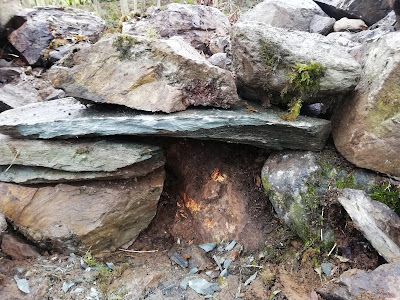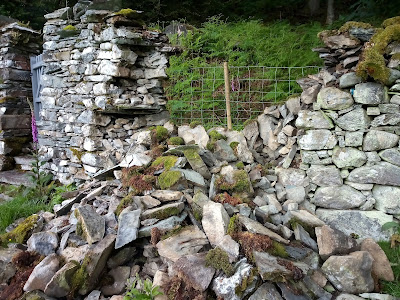In late January, Windermere rangers cleared a bramble-choked bank at Millerground above the public footpath leading to the lakeshore.
Bramble growth was in danger of choking out native bluebells that the Millerground Enhancement Group, in conjunction with the National Trust, had planted in previous years.
In addition, this area is home to native touch-me-not-balsam, which is the only food plant for the rare netted carpet moth. Pulling out the brambles not only gives more light for the plants it also has the effect of disturbing the ground. Empirical evidence has shown that touch-me-not requires some ground disturbance to thrive, and in the absence of wild boar, us Rangers will have to do!
Waste not, want not! The pulled out brambles were then transported to Moor How and put to good use as a barrier...
...to protect any potential tree or flower regeneration.
While at Moor How a small-leaved lime was planted in one of the twelve tree cages that have recently been constructed here. This is a native tree often found in ancient woodlands in the south of the country, and Cumbria and the northeast are its northern-most strongholds. It has distinctive heart-shaped leaves, flowers that provide nourishment to many bees in the height of summer, and can be extremely long-lived.
The tree had a tree guard placed around it to protect it from being ring barked by rabbits or small gnawing rodents.
Finally, Natural England and Butterfly Conservation advised that if small, designated areas of Moor How were "scarified", it would assist marsh violets and primroses to colonise said areas.
Time for the Rangers to be wild boars again... with some help. The power-barrow was brought in to "scarify" the ground. Skilful skid turns and drifts were performed...
...and a border collie, well trained in the art of conservation, soon had the ground well and truly "scarified"!
Another chosen area...Before...
...and after. Well done Blue (and power barrow).
Breaking up rank, thick grasses (dominant through previous over-grazing) has exposed mineral soil. Native wildflowers and tree seedlings will now get their chance to shine.


























































